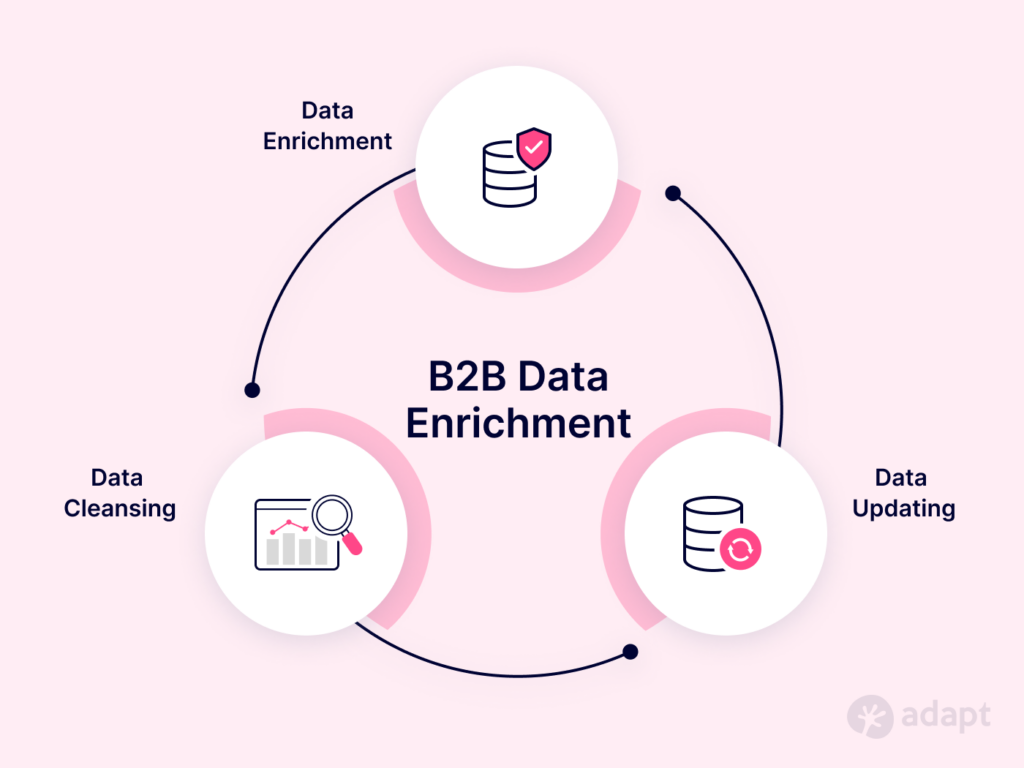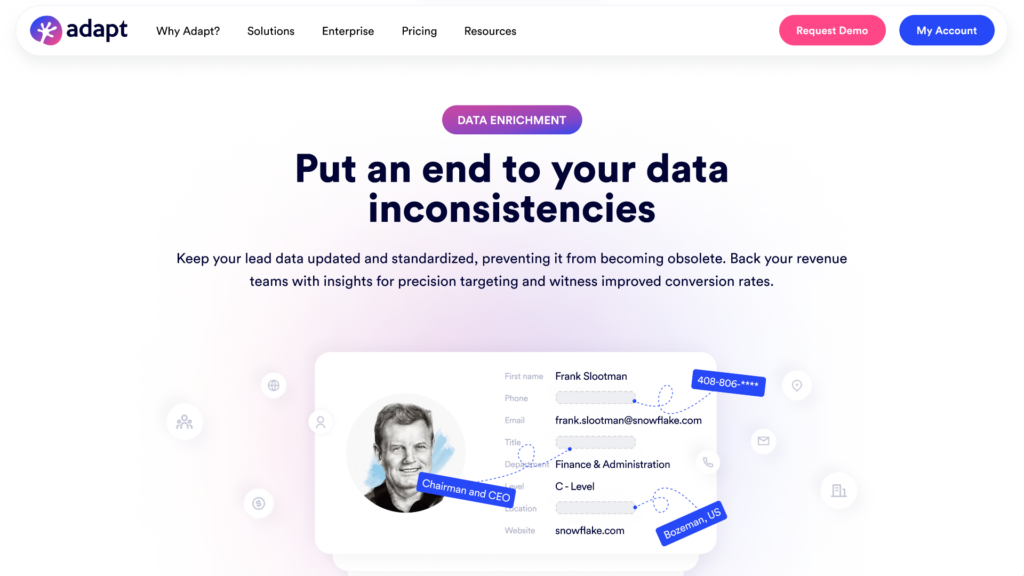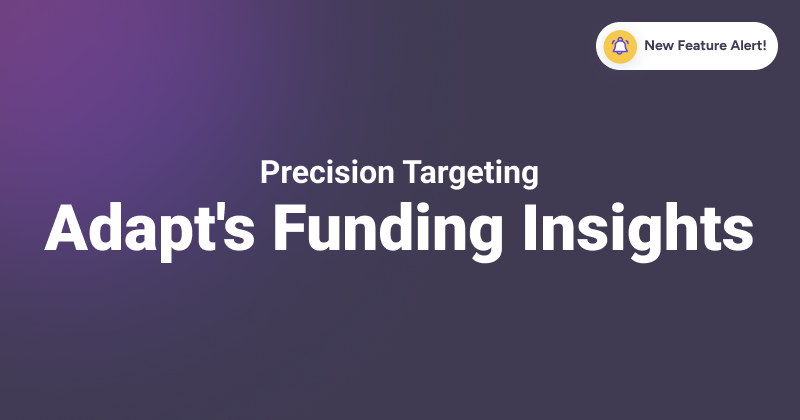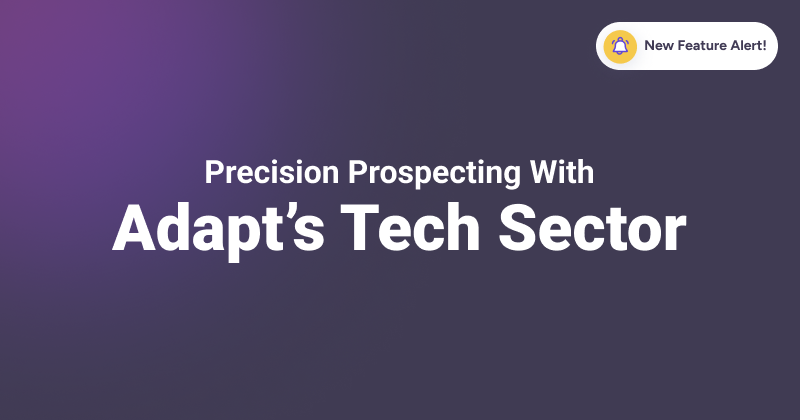Data isn’t just information; it’s the backbone of successful enterprises. Yet, imagine the frustration when critical business decisions are made based on incomplete, outdated, or inaccurate data. It’s like navigating a ship without a compass or attempting a complex puzzle with missing pieces—inefficient and often leading to costly mistakes.
Research shows that 22% of the customer data you have in your database may go obsolete every year, impacting your decision-making and growth strategies. Obsolete data not only hampers your ability to understand your buyers but also leads to missed opportunities, inefficient marketing efforts, and decreased customer satisfaction. The consequences extend beyond lost sales; they affect your brand. reputation and customer trust. This is where B2B data enrichment plays a vital role.
In this comprehensive guide, we’re diving deep to understand everything about B2B data enrichment. Explore why it’s causing the revenue leakage, understand why its become crucial than ever, and learn the steps to automate and choose the right data provider.
What is B2B Data Enrichment?

B2B data enrichment refers to the process of enhancing or improving the quality of business data by adding missing information, correcting inaccuracies, and updating outdated records. This process is crucial for revenue teams as accurate and up-to-date data is essential for effective marketing, sales, and customer relationship management. Thus, the final output is a more comprehensive and accurate database that helps you make informed decisions.
Here are the key aspects of B2B data enrichment:
1. Data Enrichment:
- Appending Missing Information: Enrichment involves adding missing data fields such as company names, addresses, phone numbers, and email addresses to existing records.
- Standardizing Data: Ensuring data consistency by standardizing formats and abbreviations, which aids in easy analysis and utilization.
- Data Formatting: Converting data into a consistent format, making it compatible with the company’s database.
2. Data Cleansing:
- Correcting Errors: Identifying and rectifying inaccuracies in existing data, such as misspellings or incorrect contact details.
- De-duplication: Removing duplicate entries to maintain a clean and organized database.
3. Data Updating:
- Real-time Updates: Keeping data up-to-date by continuously monitoring and updating information as it changes.
- Monitoring Changes: Tracking customer or prospect data changes, ensuring the database remains accurate over time.
What are the sources of B2B data?
High-quality and accurate data is indispensable if you want to reach more prospects. It can be retrieved from the following resources:
- Inbound Leads: You get most of the B2B data from inbound leads. This is the information when potential customers share their details on your landing pages.
- Sales-Sourced Data: Your sales process helps you fill in the missing information for the prospects when sales reps interact directly with potential customers, gathering details during conversations. This data is then entered into CRMs.
- Data Providers: You can also source high-quality data from B2B data providers. They compile comprehensive databases of contacts and companies, offering details like company names, addresses, industry types, decision-makers names, job titles, and contact information. You can make the same for your company with org chart app.
How outdated data is draining your revenue?
Revenue teams often notice a decline in their company’s turnover for various reasons. While they may strategize to identify the cause, there’s a significant chance they overlook a hidden threat – obsolete data.
According to a Gartner report, 90% of organizations view obsolete data as a growth challenge, with data inefficiencies costing them an average of $12.9 million annually.
Some of the significant challenges you may face because of obsolete data include:
1. Difficult to forecast and drive decisions:
Obsolete data skews analytics, leading to incorrect conclusions, difficulty in forecasting pipeline and misguided strategies. Accurate forecasting is essential for revenue teams to set realistic goals and allocate resources effectively. Obsolete data makes it challenging to forecast sales trends, making it difficult to plan and strategize for the future.You may make decisions based on historical data that no longer reflects the current market conditions, customer behavior, or trends, resulting in misguided strategies and poor decision-making.
2. Ineffective and poor personalization:
Outdated demographic or firmographic data results in email marketing campaigns reaching the wrong audience. This leads to wasted marketing budgets without generating meaningful leads or sales. Personalized marketing relies on accurate data. Obsolete data hampers the ability to create personalized marketing strategies, reducing customer engagement and response rates.
3. Missed sales opportunities:
Outdated phone numbers or email addresses prevent successful communication with potential buyers. You may miss sales opportunities because they can’t reach interested parties.Additionally, buyer preferences change over time. Obsolete data might lead to offering products or services that no longer align with customer needs, leading to lost sales.
4. Risks automation inefficiency:
Automated marketing and sales processes rely heavily on accurate data. Outdated data can lead to misdirected marketing campaigns, sending the wrong messages to the wrong audience, resulting in reduced conversion rates. Marketing automation tools nurture leads based on data parameters. Obsolete data disrupts lead nurturing sequences, delivering irrelevant content and offers, decreasing the effectiveness of automated engagement efforts.
5. Waste of resources:
Investing in marketing initiatives, sales efforts, and customer outreach based on obsolete data leads to inefficient spending. Budgets are wasted on campaigns that don’t yield the expected return on investment. Sales and marketing teams spend valuable time and effort on leads derived from outdated data, diverting resources away from more promising opportunities. This misallocation of human resources can significantly impact productivity and revenue generation.
Why has data enrichment become crucial for revenue teams?
Data enrichment significantly enhances the precision of your data. Relying solely on limited first-party data makes it challenging to gain comprehensive insights for your potential customer. Even a single incorrect data point can disrupt entire sales and marketing campaigns, emphasizing the need for accurate and enriched data.
Here are some other reasons your revenue teams must think of data enrichment:
1. Improved Targeting and Lead Generation:
Data enrichment provides detailed insights into customer demographics, behaviors, and preferences. Revenue teams can use this information to segment email lists, ensuring that marketing efforts are targeted towards the right prospects. This targeted approach increases the likelihood of generating quality leads.
2. Enhanced Personalization:
Enriched data allows revenue teams to personalize their communication and offerings based on individual customer profiles. Personalized interactions create a more engaging and meaningful experience for customers, leading to higher conversion rates and increased sales.
3. Optimized Sales and Marketing Strategies:
Enriched data provides actionable insights that help revenue teams make data-driven decisions. Analyzing enriched data enables teams to identify trends, understand customer behavior, and refine their sales and marketing strategies for maximum effectiveness.Creating a solid business plan is essential for leveraging enriched data to drive informed decision-making. For instance, business plan examples might include strategies for segmenting customers based on behavioral trends or optimizing marketing efforts using predictive analytics.
4. Efficient Lead Scoring and Prioritization:
Enriched data assists in lead scoring by providing additional information and enabling improved lead qualification. Revenue teams can prioritize leads based on their potential value and likelihood of conversion. This ensures that sales efforts are focused on leads with the highest probability of closing, leading to increased sales efficiency.
5. Streamlined Sales Processes:
Enriched data minimizes manual data entry and verification tasks. Automation of these processes saves time and allows sales teams to focus on building relationships and closing deals rather than dealing with administrative tasks.
6. Enhanced Customer Retention:
Enriched data helps revenue teams understand customer preferences and feedback. By addressing specific needs and concerns, businesses can enhance customer satisfaction, leading to customer loyalty, repeat business, and positive referrals.
7. Compliance and Data Security:
Enriched data ensures that customer information is accurate and up-to-date, reducing the risk of non-compliance with data protection regulations. Understanding how to write a privacy policy for a website, and what it entails, is fundamental to safeguarding customers’ data and maintaining trust. This compliance is crucial to avoiding legal issues like no proof class action lawsuits and maintaining the company’s reputation.
8. Competitive Advantage:
Companies that effectively utilize enriched data gain a competitive edge. By understanding their customers better and responding to their needs proactively, businesses can outperform competitors and capture a larger market share.
How to automate the data enrichment process?
Automating the data enrichment process involves using software tools and technologies to streamline the collection, validation, and integration of data from various sources. Here’s a step-by-step guide on how to automate the data enrichment process:
Step 1: Define Your Data Enrichment Goals:
Identify Objectives: Determine what specific information you need to enrich your existing data. This could include contact details, firmographics, social media profiles, or any other relevant information.
Step 2: Choose a Data Enrichment Service or API:
Select a Provider: Research and choose a reputable data enrichment service provider or API. Consider factors like data accuracy, coverage, integration capabilities, and compliance with data protection regulations.

Step 3: Integrate the Data Enrichment:
Integrate the chosen data enrichmentI into your existing systems, such as CRM software, marketing automation tools, or databases. Most providers offer developer documentation and support to assist with integration.
Step 4: Identify Data Sources:
Determine the sources from which you want to enrich your data. This could include public records, social media platforms, online databases, or proprietary datasets.
Step 5: Map Enriched Data to Your Database Fields:
Define how the enriched data will be mapped to your database fields. Ensure consistency in data structure to avoid confusion and maintain data integrity.
Step 6: Automate Data Retrieval and Enrichment:
Set up automated scripts or workflows to retrieve and enrich data at regular intervals. Scheduled tasks ensure that your data is always up-to-date without manual intervention.
Best data enrichment tools to choose from
The choice of a data enrichment tool depends on your specific requirements, budget, and the level of integration and features you need. Here’s a brief overview of each tool you mentioned:
1. Adapt.io:
Adapt Provides B2B contact and company data and gives you on-demand access to 175M+ lead profiles. It offers 25+ data points to enrich with, including email addresses, phone numbers, company information, technographic data, and more.
Pros: Rich database, integration options, technographic data.
Cons: Pricing might vary based on the level of data needed.
2. Enricher.io:
Offers data enrichment services, including lead enrichment and CRM data enrichment. It focuses on improving lead data quality for businesses.
Pros: Simplified user interface targeted towards lead enrichment.
Cons: Limited features compared to larger platforms.
3. Clearbit:
Provides B2B data enrichment services with a focus on real-time data. It offers detailed company and contact information, including social media profiles.
Pros: Rich data, real-time enrichment, robust API, seamless integrations.
Cons: Higher pricing for extensive usage.
4. FreDa:
Offers data enrichment and lead generation services. It provides B2B contact data, including email addresses and phone numbers.
Pros: Focus on lead generation, affordable pricing plans.
Cons: Limited data points compared to some other providers.
5. Cognism:
Provides B2B sales acceleration services, including data enrichment, lead generation, and CRM integration. It offers a comprehensive suite of tools for sales teams.
Pros: Full-suite sales solution, AI-powered data enrichment, GDPR compliant.
Cons: Higher pricing for all-inclusive features.
Things to consider while choosing the best data enrichment tool
Every company’s data enrichment process should be custom-fit to its data collection methods and business objectives. Yet, there are universal best practices you must follow to choose the tool that fits you best.
- Make data security a top priority, aligning your enrichment process with all relevant data protection laws to shield sensitive info
- Ensure the tool seamlessly integrates with your current apps and systems, such as your CRM, to facilitate data sharing
- Opt for a tool that can scale as your data needs expand, avoiding bottlenecks as your data volume grows
- Seek out tools that offer customization to fit your unique business requirements. One-size-fits-all solutions often fall short
- Go for tools that offer real-time updates to keep your database fresh and in tune with market changes
- Make sure the data enrichment practices comply with legal frameworks like GDPR and CCPA
The power of accurate data cannot be overstated. B2B data enrichment isn’t just a technical process; it’s the backbone of modern businesses that rely on data. By investing in keeping your data accurate and up-to-date, you are not just ensuring the reliability of your decisions, but you are also safeguarding the future of your business.
Remember, data enrichment is not an expense; it’s an investment in the growth, efficiency, and reputation of your company. Armed with enriched data, your business can confidently navigate the competitive landscape, make strategic moves, and build lasting relationships with customers. So, embrace the power of enriched data. Consult with our growth expert now and get a personalized guidance and solution on your data enrichment needs.


